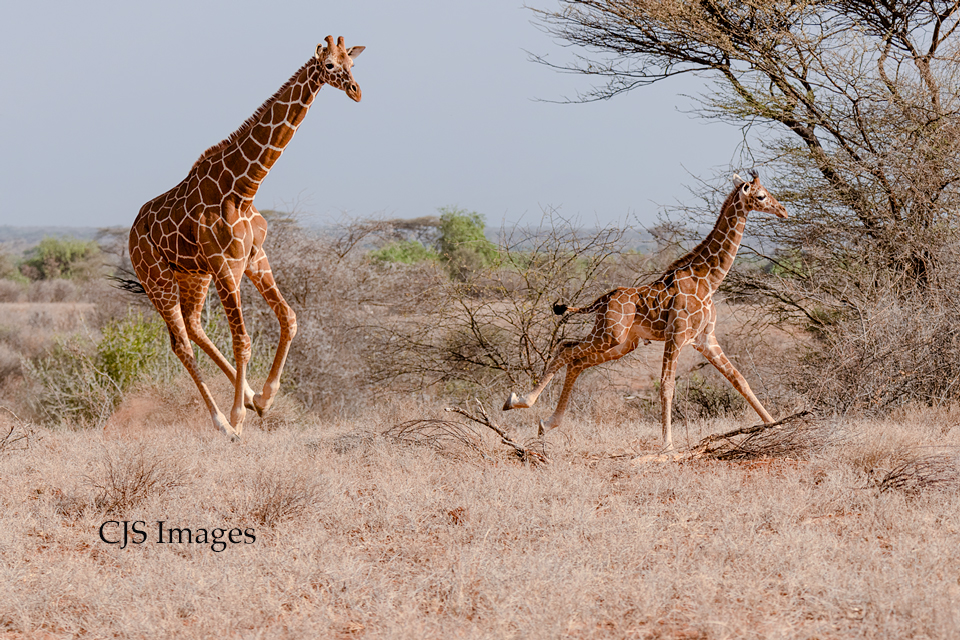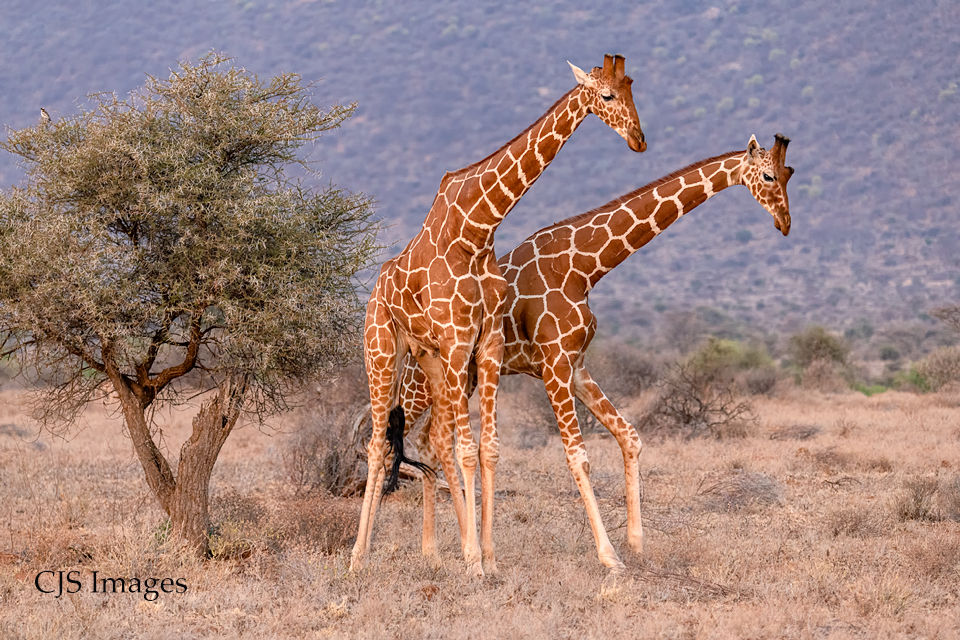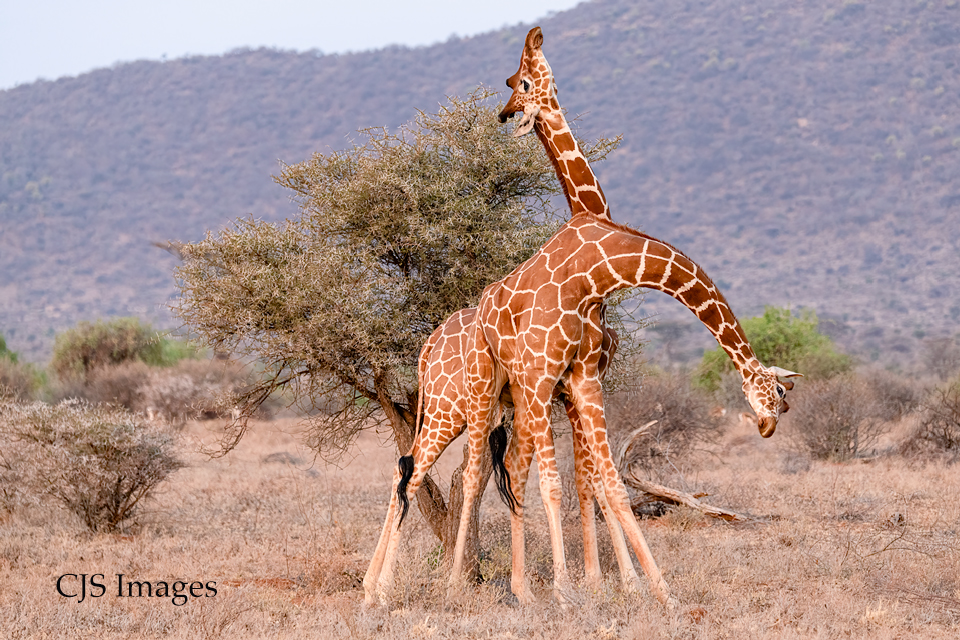Giraffes

In Kenya the Reticulated Giraffe is unique to the northern part of the country. It’s the giraffe you would normally see in zoos with it’s rich, deep color and bold pattern. We encountered quite a number in the Samburu Reserve. The images below are some of my favorites from these encounters. (Click on the images to enlarge)
We had just settled down to photograph this herd or “tower” of giraffes when something spooked them. They took off running at top speed which is something you seldom see. In spite of their somewhat ungainly bodies giraffes are rather graceful in their movements. They don’t gallop like a horse with opposite front and back legs moving in tandem, instead their front legs advance together and then their back legs with their heads moving to maintain balance. With their long legs and efficient movement they can cover a lot of territory at a top speed of 35 mph. We were surprised to see the young calf in the group move up quickly from the back of the herd and streak to the front out distancing everyone else.
Other sightings included a mother nursing a young calf. Curious about us, but not defensive. In the next image two youngsters checked us out. The dust in the air gave a foggy appearance to the image. In the background you’ll see a termite mound circling a tree.
Generally giraffes will live in same sex herds. To establish dominance and social pecking order male giraffes battle each other in a process called necking. Most of these battles will take place within the herd and once the pecking order is established the lead bulls can usually avoid further confrontation for mating rights. Necking in it’s mildest form will be two males set up side by side pressing their bodies and necks against one another until one tires and gives in. In a more intense confrontation they brace their legs and will attempt to hit each other with the horn like structures on their heads swinging their necks and using their head as a bludgeon. The battle appears to be in slow motion with dance-like movements as they duck and parry to avoid direct hits. On rare occasions a bull can be knocked unconscious or even killed. It is fascinating to watch although the sound of bone hitting bone can be pretty awful. Sometimes they seem to just be testing each other and it’s a very brief skirmish, but these battles can last 30 minutes to an hour or more. We weren’t able to stay long enough to see the outcome; however, the images above will give you an idea of what transpires.
I will be posting more images from Samburu. Please sign up to receive notifications of future posts at the top of this page. Thanks for taking the time to join me in my African adventures. Cheryl














ed cohen
22 Oct 2021Great as usual.
I am enjoying your posts.
Cheryl Schneider
22 Oct 2021So nice to hear that! Thanks, Ed.